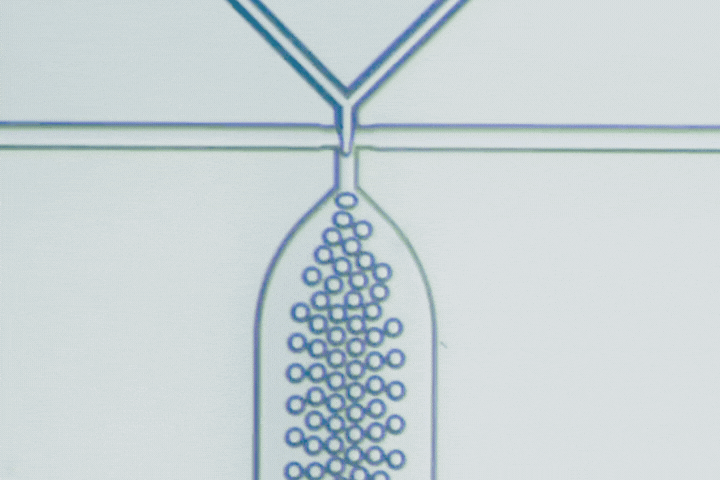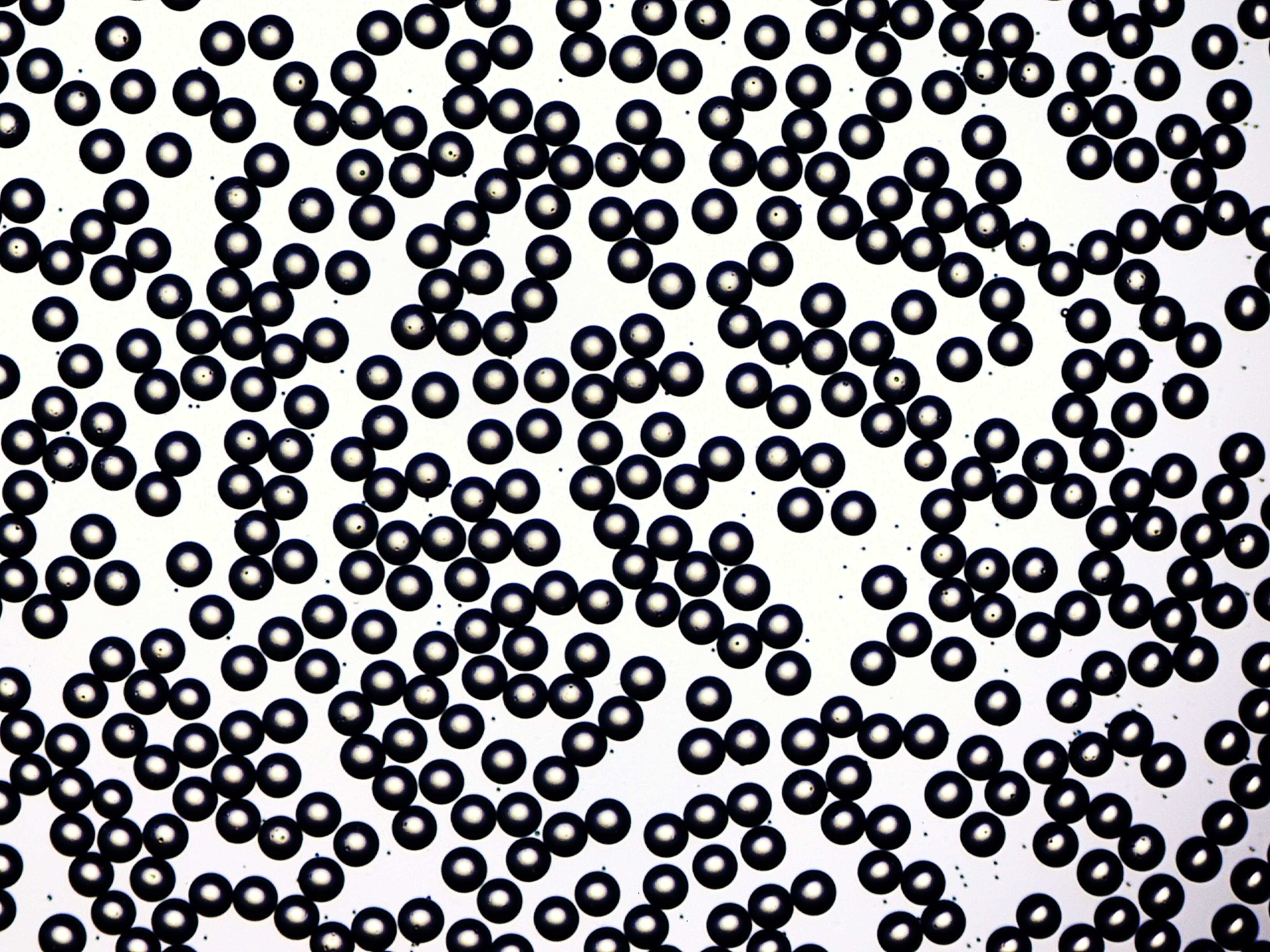Scaling up microfluidic particle production: Approaches, challenges, and opportunities
Microfluidics offers unmatched precision and flexibility in particle and emulsion production, but scaling from lab to industry brings major challenges. This article explores key advantages, reviews three leading scale-up strategies - step emulsification, parallel flow-focusing, and rotation-based platforms - and highlights critical hurdles in reagent handling, processing, and device cost to guide industrial adoption.
Microfluidics, the science and technology of precisely manipulating tiny amounts of fluids, has revolutionized particle and emulsion production. Its ability to provide exquisite flow control and product consistency makes it an attractive option for industries such as pharmaceuticals, cosmetics and life science tools which require precise, reproducible results.
However, scaling up microfluidic processes to industrial manufacturing levels presents unique challenges and opportunities.
In this post, we’ll briefly highlight the advantages of microfluidic particle production, examine different approaches to scaling up, and discuss key challenges and considerations.
The Promise of Microfluidic Particle Production
Microfluidics offers several compelling advantages for particle and emulsion production:
- Precision and consistency: Microfluidic devices can produce monodisperse particles and emulsions with tight size distributions, often achieving coefficients of variation (CV) below 5%. This level of control is difficult to match with traditional batch processes which commonly yield products with CV > 20%. This high level of control is particularly important in droplet-based genomics and in pharmaceutical manufacturing, where particle size directly influences performance.
- Reduced hardware size and improved safety: A microfluidic particle production system is significantly smaller than typical batch production equipment. Beyond requiring less space in a production facility, the smaller hardware means that less reagent is in use at any moment, reducing waste and minimizing the risk from hazardous chemicals such as solvents like dichloromethane, benzene or diethyl ether.
- Continuous production and monitoring: Unlike traditional batch approaches, microfluidic systems support continuous production, with the possibility of inline monitoring to ensure product meets quality requirements. This is achieved by maintaining stable flow conditions, where parameters such as flow rate and pressure are carefully controlled to ensure consistency.
- Flexibility and control: Microfluidic systems can be adapted to produce a wide range of particle sizes and geometries, including control over the internal features of a particle. Microfluidic systems can thus be used to produce complex structures such as core-shell particles, double or multiple emulsions, and Janus particles with exquisite reproducibility.
Despite these benefits, scaling up microfluidic production to meet industrial demands, typically ranging from tens to thousands of kilograms annually, remains a challenge.
Approaches to Scaling Up Microfluidic Production
To achieve large-scale production, researchers and engineers have developed several innovative approaches. Here are three prominent methods:
- Step Emulsion Devices
Step emulsification is performed using devices that comprise an array of hundreds of parallel nozzles entering a deeper channel to generate monodisperse droplets. Droplet generation is driven by the geometry of the nozzle and is independent of flow rate. High production rates are achievable - step emulsion devices have been produced that can produce monodisperse emulsions of aqueous PEG droplets in a fluorous carrier phase at rates over 150 mL/h .
Due to droplet size in these devices being governed solely by junction geometry the output remains consistent even if flow rates vary. On the other hand, this limits the flexibility of product formed from a step emulsion device, so a new device must be generated if a change in product size is required.
These devices can be used to generate a range of different particles, with surface treatment enabling the production of either hydrophilic particles (from water-in-oil emulsion) or hydrophobic particles (from oil-in-water emulsion).
Step emulsion devices have a low throughput per channel and so achieving high production rates requires the development of large devices with many outlet junctions.
- Parallel Flow-Focusing Junctions
This approach uses massively parallelized flow-focusing junctions (devices containing over 10,000 junctions have been developed) to achieve high throughput, with examples producing up to 2 L/h of dispersed phase having been demonstrated. One key innovation in these devices is decoupling junction resistance from the overall circuit resistance, allowing independent adjustment of junction geometry and flow rates.
Parallel flow-focusing junctions are capable of the highest throughput of microfluidic droplets or particles. In these devices droplet size can be adjusted to some extent by changing the flow rates of dispersed and carrier phases although significant changes in size are likely to require a change in junction design. A variety of solution viscosities can be tolerated by a flow-focusing junction, so these are inherently flexible devices capable of working with different inputs and offering tuneable product size.
Due to the need for large numbers of junctions these chips are highly specialized and so can be expensive to manufacture. They are tolerant to some junction failure, but blockages can eventually affect droplet size.
- Rotation-Based Platforms
Rotation-based platforms inject fluid from a capillary into a rotating bath of continuous phase. This method can produce complex geometries, such as multiphase or multicore particles, and, unlike the two systems described above, even fibers.
The scalability of rotation-based microfluidic systems is promising, with demonstrated use of multi-nozzle devices, although the current throughput is lower than either of the other platforms discussed above. The diversity of particle geometries that can be produced from a single device is useful in certain contexts.
The droplets formed from these platforms are larger than other approaches, with sizes of over 200 µm being typical, and it is unclear whether small droplets (< 100 µm) can be reliably produced using a rotation-based platform.
Key Challenges and Considerations
Scaling up microfluidic production to industrial levels is not without its challenges. Here are some critical factors to consider:
Reagent Supply and Pressure Management
Refilling reagent reservoirs can disrupt pressure, affecting droplet formation. A switchover system can minimize this, but some disturbance is inevitable.
Inline filters are for preventing blockages, but their increasing resistance over time can impact downstream processes. Periodic replacement is necessary, which may require system shutdowns.
Downstream Processing
Initiating in-droplet polymerization by applying heat is relatively straightforward, but using light initiation is more challenging due to the opacity of emulsions. Likewise, performing UV-crosslinking in droplets can be difficult at large scale. Custom systems are often required to ensure uniform treatment.
Device Cost and Complexity
Some high-throughput devices, such as those made from silicon and glass, are expensive due to the specialized fabrication techniques required.
Large-scale devices with thousands of junctions or nozzles require careful maintenance to prevent blockages and ensure consistent operation. This is a key challenge that must be addressed in the transition between working in a laboratory at research scale compared to operating at the scale of industrial manufacture.
Conclusion: Choosing the Right Approach
Both parallel flow-focusing junctions and step emulsion devices show strong potential for large-scale microfluidic production. Flow-focusing junctions offer greater flexibility and higher throughput but come with higher costs and eventual failure risks due to junction blockages. Step emulsion devices, on the other hand, are ideal for stable, consistent production where flow rate variations do not affect droplet size.
Ultimately, the choice of approach depends on specific production needs, including desired particle size, throughput, and budget. At Blacksheep Sciences we are deeply familiar with the strengths and weaknesses, and particular challenges of different microfluidic approaches. Our continual focus on the requirements of the end user ensures that we consider the full process and so can advise on, and develop, the most suitable solution for your needs.





